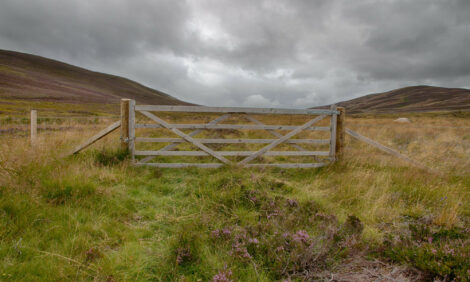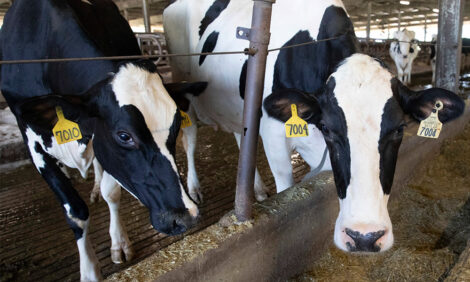



ABVMA To Increase Awareness Of Biosecurity
CANADA - The Alberta Veterinary Medical Association (ABVMA) wants to educate veterinarians and livestock producers about biosecurity.
Biosecurity entails a number of practices and physical barriers to prevent and reduce the risk of an infectious disease entering a livestock operation, clinic, barn, etc. These practices are also aimed to prevent spread of infectious diseases within the herds and between herds, and to leave that particular livestock operation or clinic.
Funding from Growing Forward’s Biosecurity programme, administered by Alberta Agriculture and Rural Development, has allowed them to complete several projects that will do just that.
Veterinarians and clinic staff deal with biosecurity risks on a regular basis, according to Dr Darrell Dalton, deputy registrar for the ABVMA. “Veterinarians are on many farms on any given day and potentially there’s a risk of spreading disease,” he says. Common areas in clinics, where animals may mingle, can also be a source of disease transmission.
Producers also face a range of biosecurity hazards. Dr Dalton explains that transport trucks, auction markets, new animals, show animals that travel, and dirty footwear or clothing can all introduce disease to a livestock operation. Global human travel and movement of livestock and livestock products has increased the risk of spread of infectious diseases to the livestock community.
“If you’ve got a flock of 10,000 laying hens and avian influenza is introduced, you could potentially lose all those birds,” says Dalton.
The ABVMA hopes to raise awareness of the benefits of risk assessment and the principles of disease transmission. Although biosecurity awareness is growing, getting people to implement basic practices can be challenging.
“Biosecurity is not convenient. I think in most cases it is easy, but it does require people to make small changes to practices on their farms and in their clinics,” says Nichole Boutilier, a registered animal health technologist with the ABVMA.
Boutilier worked with ten commodity organisations to create resources designed to educate producers about biosecurity and enhance their current efforts. Each commodity organisation decided which resources would best meet the needs of their members. The ABVMA then developed the content and managed the projects.
A variety of biosecurity resources were created, including pamphlets, biosecurity training manuals to be used in workshops, washable posters for inside poultry barns, and visitor parking signs. Ms Boutilier explains that the information in each resource falls under the three pillars of biosecurity; controlling access, managing animals and managing operations.
The ABVMA is also working on a manual to help veterinarians and clinic staff members recognise and minimise biosecurity risks. The manual is geared towards all types of veterinary clinics, whether they focus on livestock or small animals. It will be distributed to Alberta clinics at the CanWest Veterinary Conference in October 2011.
Producers and veterinarians can access many of the biosecurity resources through the ABVMA’s website, under “Resources for the Public.”
Carolyn Jamieson is a programme coordinator with the Animal Health Branch of Alberta Agriculture and Rural Development. She explains that the projects covered by Growing Forward’s Biosecurity programme for non-profit organisations are diverse, as material is developed for each non-profit’s specific membership. “We encourage each industry to develop its own biosecurity standards,” she says.
“There is funding available for not-for-profit organisations. To apply, they need to submit a letter of intent,” adds Ms Jamieson.
TheCattleSite News Desk


